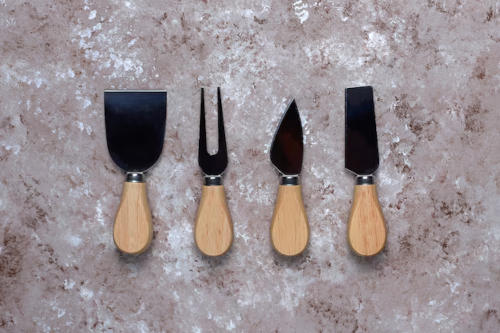Versatility is a crucial aspect that each one of us wants in every product we use. Whether for our workspace laptops or kitchen knives, we want our equipment to do all the tasks. This is where multi-tools come into action.
Multi-tools are useful gadgets that combine several features in the smallest size possible. Due to their ability to fold and their convenient size, multi-tools are adored by hunters, fishermen, and handymen.
In the middle of these tools are cutting edges or blades, which depend on the tool’s intended function. Below are various multi-tools explained with various essential roles in various tasks.

1. Straight Edge Blade
The straight-edge blade is the most popular and arguably vital part of multi tool blades available on the market.
This blade type has a little thickness and is friendly with a variety of cutting demands. From cutting ropes to opening packages or for food consumption, the straight-edge blade is always the one you can depend on.
Due to its polished edges, it leaves immaculate cuts, which makes it very popular with many users.
2. Serrated Blade
While the straight-edge blade will effectively complete the initial cuts, the serrated blade is created to cut through materials that the straight-edge blade cannot handle.
The serrated edges of the blade give a slicing effect that helps trim through fibrous or other rigid materials such as ropes, seat belts, or even branches.
For this reason, the serrated blade is a handy piece of equipment to have during an emergency or whenever one is out enjoying the outdoors.
3. Combination Blade
A combination blade is a blade where one face has a smooth blade while the other face has a jagged edge, offering the best of both worlds.
This design enables the operator to achieve different types of cutting and higher cutting rates without having to pick or change the tool.
The combination blade is especially beneficial for people in need of a versatile and small-size cutting tool, which is the reason why it can be found widely in multi-tools.
4. Hook Blade
The hook blade or gut hook is a unique blade that is used especially for those projects that require accuracy and control.
The design of the inward-curved tip enhances the slicing mechanism without drilling into the substrates of the items being cut.
This blade is employed mainly by hunters for scaling tasks of the game and by the rescue squads for slicing through seat belts and clothes. Due to its unique design, there is less chance of an unintentional injury while guaranteeing a clean cut.
5. Scissors
Many multi-tools come with scissors, which are helpful because of their accuracy and adaptability, even if they aren’t actual blades.
Scissors can be used for cutting paper, trimming cloth, and snipping delicate wires that blades would be too heavy for.
The addition of scissors increases the multi-tools capability and gives it a complete answer for various jobs.
6. Wood Saw Blade
A wood saw blade is an essential addition to a multi-tool for people who go camping or trekking on a regular basis.
This blade is perfect for clearing a path, chopping firewood, and building shelters because it has aggressive, sharp teeth that cut into wood with ease.
For anybody spending time outdoors, the wood saw blade transforms a multi-tool into a compact survival kit.
7. Metal File and Saw
The metal file and saw, which are necessary for tasks involving maintenance and repair, is another crucial element.
The metal saw can cut through metal pipes, bolts, and other hardware, while the metal file can smooth off uneven edges and sharpen other tools.
Handymen and do-it-yourself enthusiasts who need to perform last-minute repairs or alterations on the go will find these items helpful.
8. Chisel Blade
The chisel blade is crafted for precision tasks requiring a sharp, straight edge, making it ideal for woodworking. Users can carve, shape, and fine-tune wood pieces with ease.
Beyond woodworking, the chisel blade is versatile for scraping off paint, glue, or other materials from surfaces.
This functionality extends its usefulness to crafting and maintenance tasks, ensuring it remains a handy tool in various situations where precision and control are essential.
9. Sheepsfoot Blade
The sheepsfoot blade, built for optimum control and precision, is distinguished by its rounded tip and straight edge. For tasks like trimming, carving, and slicing that call for precise and careful cuts, this blade is perfect.
Medical experts, sailors, and artists can safely choose it because of its unusual design, which reduces the possibility of unintentional punctures.
The sheepsfoot blade is a valuable addition to a multi-tool blade because of its emphasis on control and safety.
Conclusion
Multi-tool blades are designed to address a variety of tasks, making them indispensable for a wide range of users.
From the versatile straight-edge blade to the specialized sheepsfoot blade, each blade plays a crucial role in enhancing the functionality of a multi-tool.
Understanding the essential roles of these blades can help users choose the right multi-tool for their needs, ensuring they are well-equipped to handle any task that comes their way.







